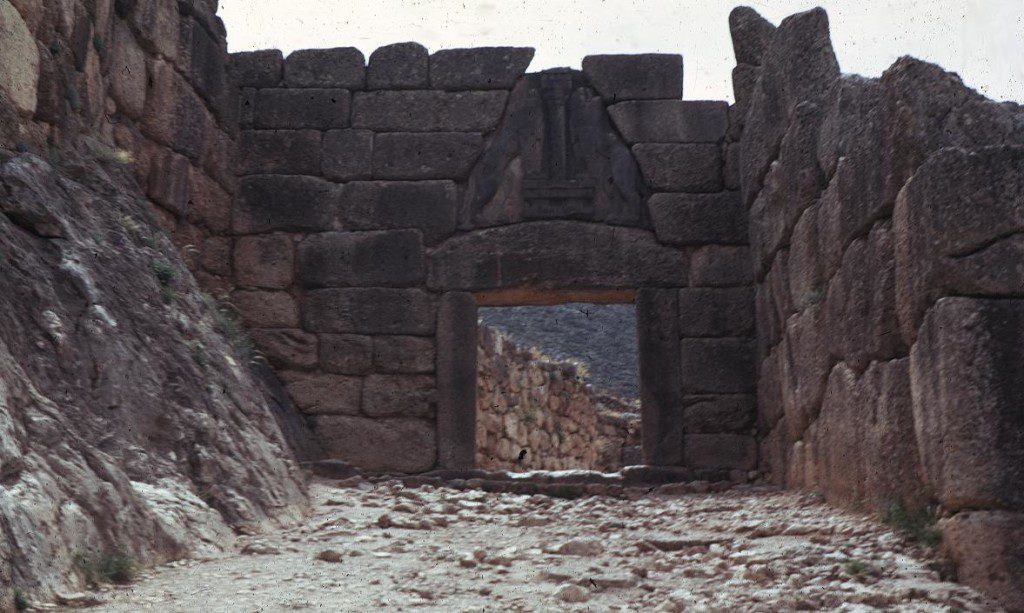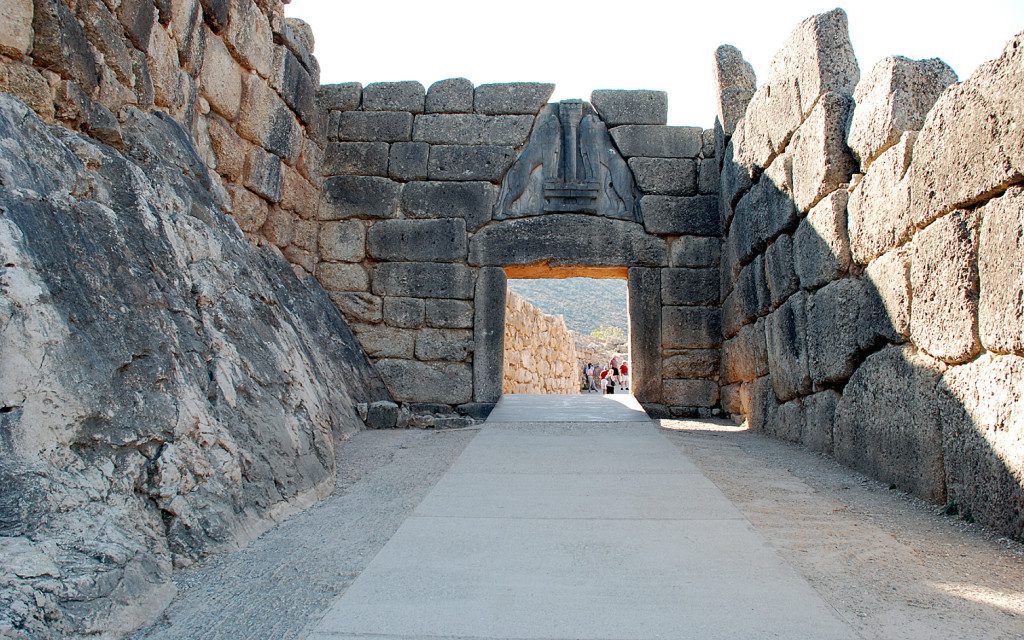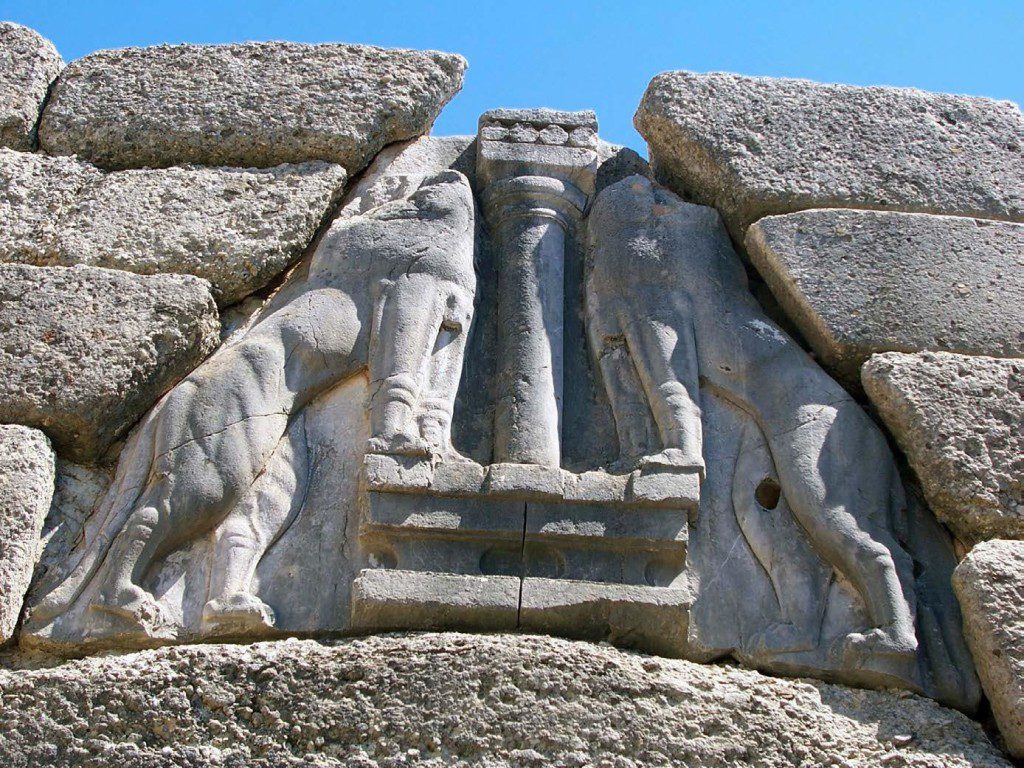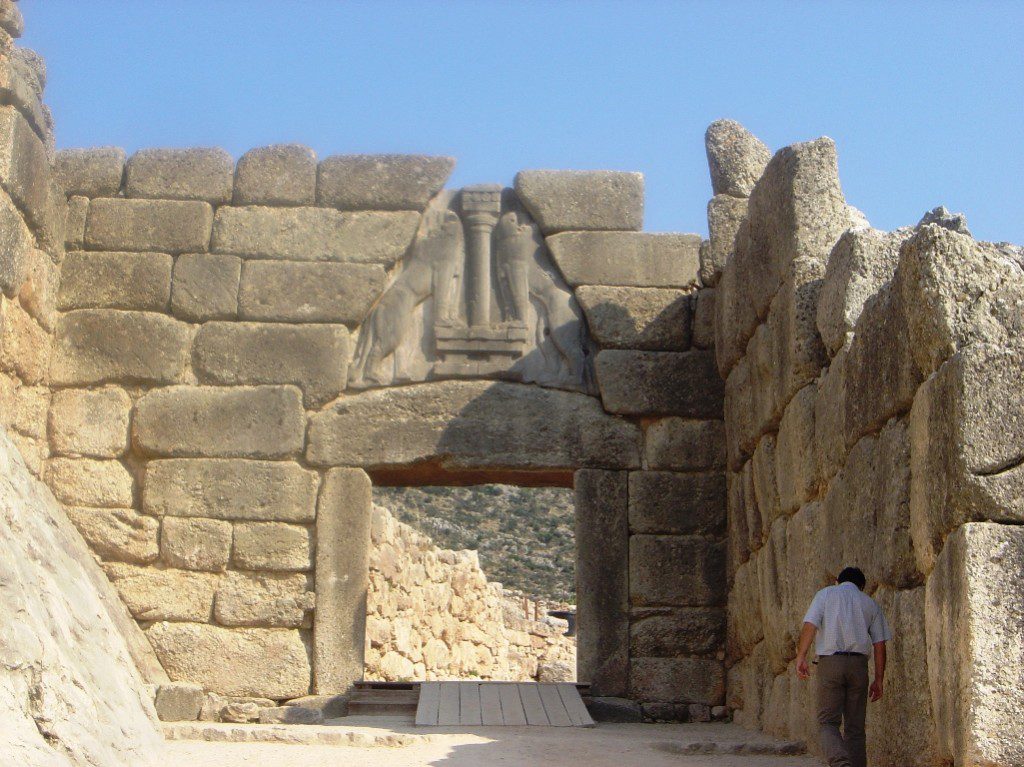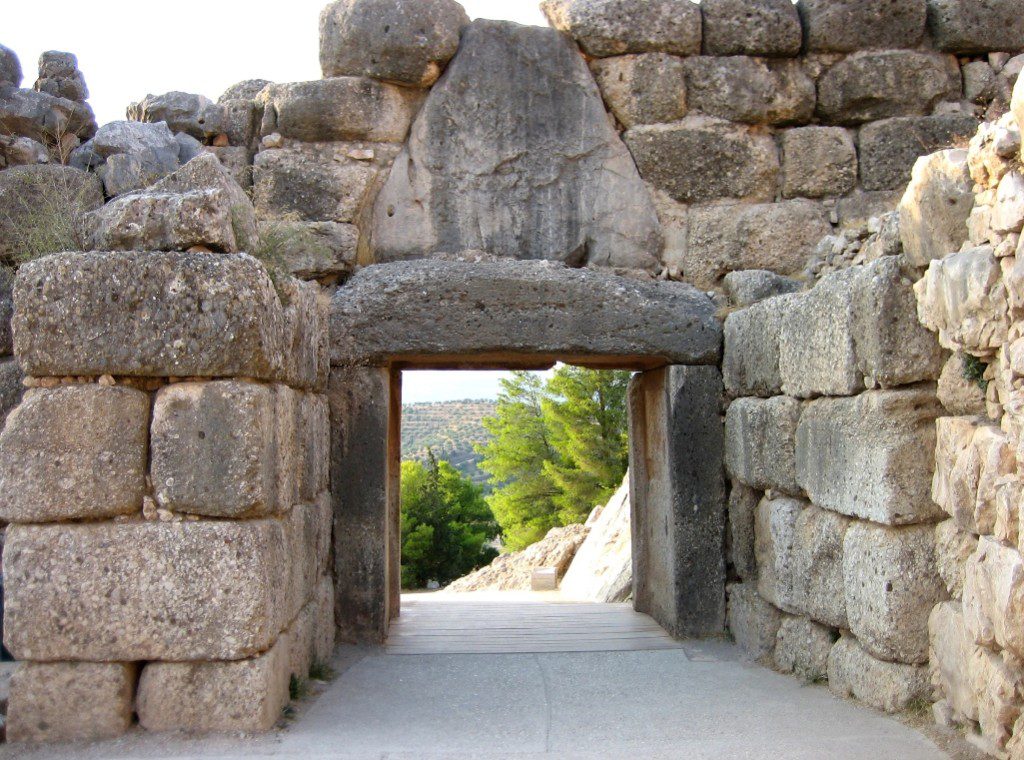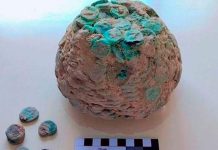In Southern Greece “The Lion Gate” of Mycenae was the entrance to the city erected during the 13th century BC on the northwest side of the acropolis and is named after the relief sculpture of two lionesses in a heraldic pose that stands above the entrance. Atop the gate, two lions’ fecund are carved in stone relief.
Alike bas-reliefs of two lions rampant facing each other are found in a number of places in Phrygia in Asia Minor. The Lion Gate is the sole surviving monumental piece of Mycenaean sculpture, as well as the largest sculpture in the prehistoric Aegean. Therefore, the greater part of the cyclopean wall in Mycenae, including the Lion Gate itself, was built during the 2nd extension of the citadel extended fortifications also included Grave Circle A, the burial-place of the 16th-century BC royal families inside the city wall.
Although this grave circle was established east of the Lion Gate, after the expansion, Mycenae could be entered by two gates, the main entrance, and a postern, while the most extensive feature was unquestionably the remodeling of the main entrance to the citadel, famous as “The Lion Gate”, in the northwestern side built circa 1250 BC.
The Lion Gate was come up to by a partly natural, partly engineered ramp on a northwest-southeast axis. Because the eastern side of the approach is flanked by the steep smooth slope of the earlier enceinte. Hence this was embellished with a new facade of the conglomerate. Therefore, on the western side a rectangular bastion was erected, 49 feet long and 24 feet wide, built-in pseudo-ashlar style of enormous blocks of conglomerate.
Moreover, the term “Cyclopean” was therefore applied to imply that the ancient structures had been built by the legendary race of giants whose culture was presumed to have preceded that of the Classical Greeks, as described in their myths. Between the wall and the bastion, the approach narrows to a small open courtyard measuring 49 feet × 24 feet, possibly serving to limit the number of attackers on the gate.
The bastion on the right side of the gate facilitated defensive actions against the attackers’ right-hand side, which would normally be vulnerable as they would carry their shields in their left arms. At the end of the approach stands the Lion Gate.
Related Reading – The Lion’s Mound of Battlefield of Waterloo.
The Lion Gate is a huge and imposing construction, standing 10 feet wide and 10 feet high at the threshold. It narrows as it rises, measuring 9 feet below the lintel. The opening was closed by a double door mortised to a vertical beam that acted as a pivot around which the door revolved.
The gate itself consists of two great monoliths capped with a huge lintel that measures 15×7×3 ft. Well, above the lintel, the masonry courses form a corbelled arch, leaving an opening that lightens the weight carried by the lintel. This relieving triangle is a great limestone slab on which two confronted lionesses carved in high relief stand on either side of a central pillar.
The heads of the animals were fashioned separately and are missing. The pillar, specifically, is a Minoan-type column that is placed on top of an altar-like platform where the lionesses rest their front legs on.
Furthermore, the imposing gate of the citadel with the representation of the lionesses was an emblem of the Mycenaean kings and a symbol of their power to both subjects and foreigners. It also has been argued that the lionesses are a symbol of the goddess Hera.
Nevertheless, the Lion Gate may be compared to the gates of the Hittite Bronze Age citadel of Hattusa, in Asia Minor. Since the heads of the animals were of an unrelated material from their bodies and originally were fashioned to look toward those approaching below, a number of scholars have recommended that they were composite beasts, perhaps sphinxes, in the typical Middle Eastern tradition. Therefore, on the top of the pillar is a row of four discs, actually representing rafters supporting a further piece of sculpture that has since been lost?
The design of the gate had precedents in other remaining artworks of the time; a related design was depicted on 15th-century Minoan seals and a gem found at Mycenae. Well, several other pieces of Mycenaean artwork share the same basic pattern of two opposed animals separated by a vertical divider, such as two lambs facing a column and two sphinxes facing a sacred tree representing a deity.
Beyond the gate and inside the citadel was a covered court with a small chamber, which probably functioned as a guard post. On the right, adjacent to the wall, was a building that has been identified as a granary because of the Pithoi found there enclosing carbonized wheat.
The Lion Gate is a popular tourist destination in Mycenae for many centuries, and it was mentioned by the ancient geographer Pausanias in the 2nd century AD. Moreover, as you walk in through the gates, there is a little compartment within the rock wall, inside the gate, which several legends believe was either a guard post or meant to keep guard dogs. The Lion Gate has become over the years the trademark of the entire archaeological site of Mycenae. In ancient times, there was a wooden door to shut the entrance. The door opened inwards and it used to lock with a wooden bar.
Source: Greeka & Wikipedia


